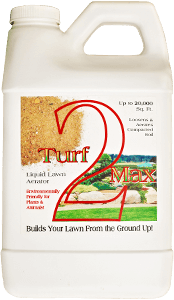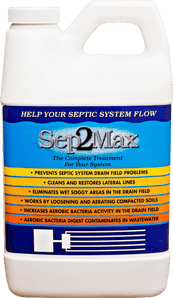We are going to discuss soil restoration in the context of reclaiming alkaline soils. This is certainly one of the major challenges we face today, particularly in the western United States.
Factors that Contribute to Soil Alkalinity
Typically soils in the arid regions contain less clay. Clay containing soil contains numerous negatively charged exchange sites for cation nutrients. Therefore when there is little or no clay that means that there are fewer sites in the soil to hold hydrogen (H⁺) ions.
Consequently, there is a far less chance of the soils being acidic or neutral. And with less rainfall to incorporate H⁺ ions into the soil, there is little chance for an acid-base reaction to occur at all in the soil. Irrigation water further compounds the problem by adding more alkaline salts.
Water evaporation rates are so high in arid regions that it causes the hydroxyl (OH⁻) ions to combine with alkaline earth metals such calcium, magnesium, iron, zinc, and manganese. The compounds formed are virtually insoluble in water, creating deposits on the surface.
Problems Associated with High pH Soils
Alkaline soils typically have the following characteristics and impacts:
- Accumulation of excessive salt in irrigated soils can reduce crop yields, reduce the effectiveness of irrigation, ruin soil structure, and other soil properties.
- Common salts may include calcium, magnesium, sodium, potassium, sulfate, chloride, carbonate, and bicarbonate.
- High exchangeable sodium, high pH, and low calcium and magnesium disperse clay soils.
- Generally, when soil pH is above 8.5 it indicates sodium problems.
- Infiltration through the surface and root zone can be severely impacted in alkaline soils.
- Drainage in the soil is required to allow the alkaline salts to leach below the root-zone.
- Since saline soils increase the osmotic potential of soil water, plants have difficulty absorbing water.
Bicarbonates (HCO₃⁻ ) can be common in irrigation water. The presence of substantial amounts of bicarbonates will cause the calcium to precipitate, especially in high pH and low moisture soils. What happens? Sodium increases relative to the available calcium.
It is worth noting that bicarbonates are toxic to plant roots, reduce plant growth, and inhibits phosphorous and micronutrient uptake.
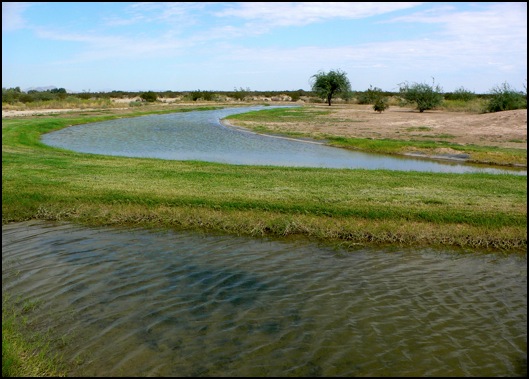
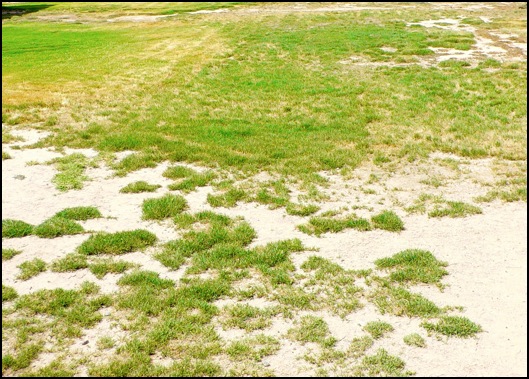
The Effects of Alkaline Salts on Soil Structure
Management of alkaline soils is a challenge because the salts affect plant growth, soil structure, and water percolation. Salts can be leached through the profile by irrigation. The problem is that if the irrigation water contains more than 50 ppm of sodium, it could impact soil structure. This is dependent upon how much free calcium (Ca²⁺ ) and magnesium (Mg²⁺) ions are in the water or soil.
Sodium Absorption Ratio (SAR)
Soil structure depends on the balance of Ca²⁺ and Mg²⁺ relative to sodium (Na⁺). Soil particles aggregate when Ca²⁺ and/or Mg²⁺ ions are increased relative to Na⁺ thereby decreasing the sodium absorption ratio (SAR). However, soil particles disperse if the concentrations of [Ca²⁺] + [Mg²⁺] decrease relative to the concentration of [Na⁺].
SAR is the expression of the relative amount of sodium ions within the soil. Mathematically this expressed as SAR = [Na⁺] / [Ca²⁺] + [Mg²⁺] units expressed in mmoles / liter.
The Role of Calcium and Magnesium
Therefore the soil restoration protocol that would involve improving these soils is by releasing Calcium (Ca²⁺) and Magnesium (Mg²⁺) ions into the soil solution. Why? Because these cations join together negatively charged clay soil particles forming water stable aggregates.
This is great except for one problem. The calcium and magnesium in high pH soils are locked up thus preventing them from performing its “magic”. The base cations are tied up as insoluble salts.
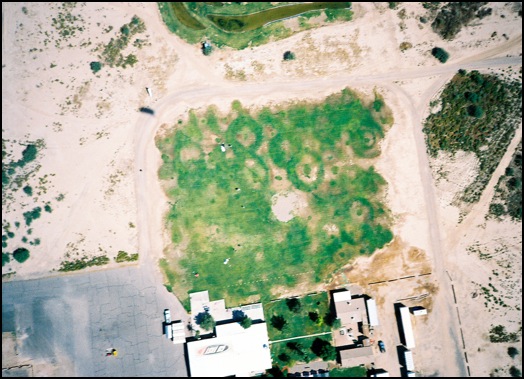
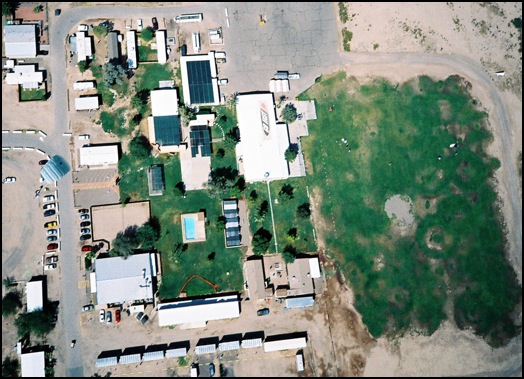
What is the Solution?
Alkaline salts such as calcium carbonate, calcium phosphate and magnesium carbonate (and others) are not soluble in water, even to the slightest degree. However, alkaline soils containing any of the insoluble compounds can be solubilized by the addition of acids.
A common management practice involves adding a solution of sulfuric acid to calcareous soils. By doing this gypsum becomes a byproduct of the reaction. The chemical equation is as follows: H₂SO₄ (sulfuric acid) + CaCO₃ (calcium carbonate) → H₂O + CaSO₄ (gypsum) which ionizes into Ca²⁺ and sulfate (SO₄²⁻). The desired outcome is to increase soluble Ca²⁺ that improves aggregate stability in soils with poor structure.
Another common practice involves applying elemental sulfur on calcareous soils whereby gypsum becomes a byproduct of the reaction. The soil microbes convert the sulfur into sulfuric acid as follows: S (sulfur)+ O₂ + CO₂ + 2H₂O → H₂SO₄ + CH₂O. Then the synthesized sulfuric acid dissolves calcium carbonate and makes gypsum. The typical timeframe for this process can be several weeks during the winter season and somewhat faster in the warm months.
Soil Restoration of Sodic and/or Saline Soils Using Turf2Max
This technique for desalination and reclamation of the alkaline salts involves incorporating products that contain organic acids. A significant advantage is that this approach does not add either sulfuric acid or sulfur into the soil. This eliminates the synthesis of sulfuric acid in the soil, therefore, eliminates the potential for plant toxicity.
The organic acids dissolve the alkaline salts and free up soluble Ca²⁺ and Mg²⁺ plus other cations into the soil solution. This improves the structure of the soil by displacing sodium with the ionized Ca²⁺ and Mg²⁺.
Water allows the organic acids to combine with or leach the salt in the soil below the root zone or germinating seed. A huge benefit for this process is that the osmotic potential in the soil should decrease as a result of the treatment.
The organic acid material can be added by any method of irrigation. It can be over-sprayed on plant material without adverse effects which means that the organic acids can be incorporated any time of the year.
The organic acid groups solubilize alkaline salts such as calcium and magnesium carbonate, therefore, releasing free calcium (Ca²⁺) and magnesium (Mg²⁺) ions (plus others) into the soil solution. As the freed up calcium and magnesium ions improve the soil structure, the “bad” material such as bicarbonates, sodium, and chlorides are leached below the root zone.
Not only will Turf2Max help to solubilize the alkaline materials, it will prevent the re-formation of the alkaline salts particularly when applied as a drip irrigation. Turf2Max converts the base cations into usable plant nutrients.
Other notable benefits of improving the soil structure include increased infiltration and percolation, reduced soil compaction and restoring the proper pore space. One of the obvious benefits is the reduction in water usage because of the increased amount of water percolation.
It has been noted over the years that seed germination increases due to the dissolving of the alkaline material on the surface crust, thus maintaining surface moisture for longer intervals.
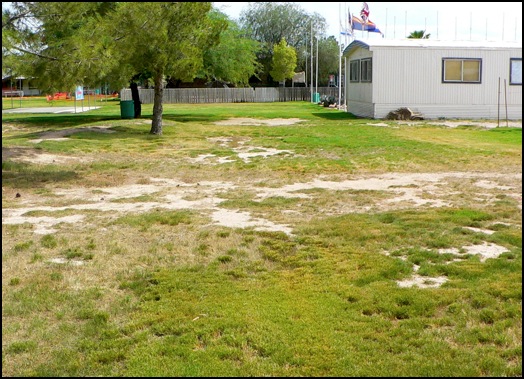
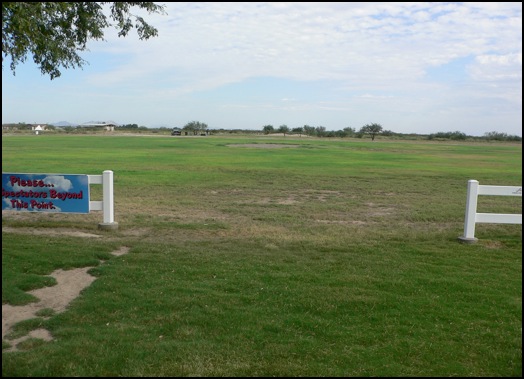
Application
The preferred application method for alkaline soils particularly in the western United States is by a continuous and/or drip irrigation. Other methods including the use of a boom sprayer have been successful. The advantage of drip is that Turf2max can be applied at a reduced rate on a continual basis. This will help to keep the alkaline material continually dissolved during and after application.
Application rates and frequencies for soil restoration projects are site specific. Turf2Max is non-toxic to plants and soil microorganisms, therefore, is safe to use. For extreme conditions such as oil producing sites or other brine (salt water) spills, contact us and we will work with you regarding a site-specific remediation plan for your site.
If you have any questions let us know. We will be glad to work with you!
